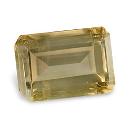|
|
||||||||||||||||
|
||||||||||||||||
|
||||||
|
|
|
|
Sanidine
|
|
| | |
| Discovered in 1808; IMA status: Valid (pre-IMA; Grandfathered) | ||
|
| ||
|
Chemistry |
|
|
| |
|
(K,Na)(Al,Si)4O8 | |
|
|
Potassium Sodium Aluminum Silicate |
|
Molecular Weight: |
274.30 gm |
|
Composition: |
Potassium |
10.69 % |
K |
12.88 % |
K2O |
|
|
Sodium |
2.10 % |
Na |
2.82 % |
Na2O |
|
|
Aluminum |
9.84 % |
Al |
18.59 % |
Al2O3 |
|
|
Silicon |
30.72 % |
Si |
65.71 % |
SiO2 |
|
|
Oxygen |
46.66 % |
O |
|
|
|
|
|
100.00 % |
|
100.00 % |
= TOTAL OXIDE |
|
|
|
||||
|
Classification |
|
|
| |
|
Silicates (Germanates) | |
|
8/J.06-20 | |
|
|
9 : SILICATES (Germanates)
|
|
Related to: |
Feldspar Group. Sanidine-Albite Series. Potassium Feldspars (K-Feldspars). |
|
Members of Group: |
Feldspar Group: Albite, Amazonite, Andesine, Anorthite, Anorthoclase, Banalsite, Buddingtonite, Bytownite, Celsian, Dmisteinbergite, Hyalophane, Labradorite, Microcline, Oligoclase, Orthoclase, Paracelsian, Reedmergnerite, Sanidine, Slawsonite, Stronalsite, Svyatoslavite |
|
Varieties: |
Azulicite, Barium-Sanidine, Citron Feldspar |
|
Synonyms: |
Glassy Feldspar, Gränzerite, K-spar, potassium Feldspar, Rhyacolite, Riacolite |
|
|
|
|
Crystal Data |
|
|
|
|
|
Crystals commonly tabular on {010}, with a square cross section, to 50 cm. Acicular in spherulites. |
|
|
Carlsbad twins are common, Baveno and Manebach twins rarer |
|
|
|
|
|
Physical Properties |
|
|
|
|
|
Perfect on {001}, distinct on {010}; parting on {100} |
|
|
Irregular/uneven, Conchoidal |
|
|
Brittle |
|
|
6.0 |
|
|
2.56 - 2.62 (g/cm3) |
|
|
None |
|
|
Barely Detectable; GRapi = 152.94 (Gamma Ray American Petroleum Institute Units) |
|
|
|
|
|
Optical Properties |
|
|
|
|
|
Colorless, white, gray, yellowish white, reddish white, very rarely blue (Azulicite); colorless in thin section |
|
|
Transparent to translucent |
|
|
Vitreous, pearly on cleavages |
|
|
1.518 - 1.531 Biaxial ( - ) |
|
|
0.006 - 0.007 |
|
|
Weak; r < v or r > v |
|
|
None |
|
|
|
|
|
Occurances |
|
|
|
|
|
Geological Setting: |
Most common in felsic volcanic and hypabyssal rocks as rhyolites, phonolites, trachytes; as spherulites in volcanic glass. Also from ultrapotassic mafic, high-temperature contact metamorphic (sanidinite facies), and hydrothermally altered rocks. From eclogite nodules in kimberlite. |
|
Common Associations: |
Quartz, sodic Plagioclase, Muscovite, Biotite, hornblende, Magnetite |
|
Common Impurities: |
Fe, Ca, Na, H2O |
|
Type Locality: |
Drachenfels, Königswinter, Siebengebirge, North Rhine-Westphalia, Germany |
|
Year Discovered: |
1808 |
|
View mineral photos: | |
|
|
|
|
More Information |
|
|
|
|
|
| |
|
|
|
|
Sanidine was named in 1808 by Karl Wilhelm Nose (1753-1835) from the Greek words σάνις (sanis) meaning tablet and ιδος (idos) meaning to appear in allusion to the mineral's common flattened, tabular crystal habit. Sanidine was described by Nose as glassy tabular crystals from volcanic rocks of the lower Rhine Valley, Germany. Sanidine is a fairly rare mineral and even rarer as a faceted gem as crystals are rarely large enough for faceting. It is found in several locations around the world but the main source of Sanidine gems is Itrongay, Mahasoa East Commune, Betroka District, Anosy Region, Tuléar Province, Madagascar. Large, gem quality crystals from this location have been found in bright yellow to straw yellow and greenish-yellow crystals up to about 100 carats from as early as the early 1900's. Until recently these crystals (and gems) were incorrectly labeled as "Orthoclase" instead of Sanidine. Sanidine gems from Madagascar are exceptional in their size, clarity, saturation and uniformity of color. Sanidine
distribution: Not uncommon, but rare in crystals of
any size. In Germany, from Drachenfels, Siebengebirge,
Rhine; and at Hohenfels, Mendig, Mayen, and elsewhere
around the Laacher See, Eifel district. In France, at
Mt. Dore, Auvergne, and Puy Gros du Laney, Puy-de-Dôme.
From Vesuvius and Monte Somma, Campania, and Monte Cimine,
Lazio, Italy. At Daichi, Wakayama Prefecture, Japan.
From Kanchin-do, Meisem-gun, northeast Korea. In the
USA, at Tooele, Tooele County, Utah; Cottonwood Canyon,
Peloncillo Mountains, Cochise County, Arizona; as large
crystals in Rabb Canyon and near the crest of the Black
Range, Grant County, New Mexico. From Bernic Lake, Manitoba,
and Mont Saint-Hilaire, Quebec, Canada. In Mexico at
the (early 1990's) Pili Mine, Mun. de Saucillo, Chihuahua, and
at Sierra de San Francisco, Durango. At Itrongay, Mahasoa East Commune, Betroka District, Anosy Region, Tuléar Province, Madagascar.
|
|
|
We
have not photographed our Sanidine
gems yet. Please
check back soon. |
